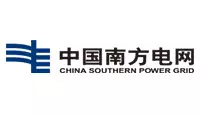
Introduction to the common materials of high temperature resistant gloves and their characteristics
High-temperature resistant gloves are a kind of protective gloves designed for high-temperature working environments, with the characteristics of high-temperature resistance, anti-heat radiation, heat penetration resistance, comfort and so on. The following are the common materials of high temperature gloves and their characteristics:
I. Ceramic fibreMain component: aluminium oxide, by adding zirconium oxide or chromium oxide can further increase the use of temperature.
Features:
Excellent high temperature resistance, can withstand high temperatures above 1000°C.
Good thermal insulation and adiabatic properties, non-toxic.
Gloves are light and have good flexibility, suitable for machinery, metallurgy, chemical industry and other industries.
II, glass fibreMain components: silicon dioxide, aluminium oxide, calcium oxide, boron oxide, magnesium oxide, sodium oxide, etc..
Classification: According to the amount of alkali content in the glass, it can be divided into non-alkali glass fibre, medium alkali glass fibre and high alkali glass fibre.
Features:
Good insulation, heat resistance, good corrosion resistance, high mechanical strength.
There are many kinds of fibres, which can be selected according to specific needs.
Brittle nature, poor abrasion resistance, the choice needs to pay attention to abrasion resistance and tear resistance.
III, aramid fibreFull name: poly terephthaloyl terephthalamide (Aramid fibre).
Features:
With ultra-high strength and high modulus, the strength is 56 times that of steel wire, modulus is 23 times that of steel wire or glass fibre, toughness is 2 times that of steel wire, while the weight is only about 1/5 of steel wire.
Excellent high temperature resistance, does not decompose or melt under the high temperature of 560°C.
Strong chemical stability, acid and alkali resistance, good insulation, anti-aging ability, long service life.
Suitable for high-temperature operating environment and the need for high strength, high modulus and wear resistance, such as aerospace, military equipment.
IV. Silicon CarbideFeatures:
High hardness, high melting point, high wear resistance and high thermal stability.
Can withstand high temperatures above 800°C, with good wear resistance and heat penetration resistance.
Strong thermal shock resistance and oxidation resistance, able to maintain stable performance at high temperatures.
V. RubberFeatures:
It has good heat resistance and anti-heat radiation performance.
Has a certain degree of elasticity and comfort, providing good hand protection.
Usually made of natural rubber or synthetic rubber, it has good insulating properties and chemical resistance.
It may gradually deteriorate under high temperature and needs to be inspected and replaced regularly.
VI. LeatherMain material: cowhide, pigskin, etc.
Features:
Good abrasion resistance and heat penetration resistance.
Flexibility and durability, easy to wear, allows hands to move freely.
It may harden under high temperature, affecting the flexibility when using.
Suitable for high-temperature working environments in construction, wood processing and other industries.
In summary, various high temperature resistant glove materials have their own unique advantages and applicable scenarios. When choosing heat-resistant gloves, it is necessary to consider the temperature of the working environment, the presence of other risk factors (such as mechanical injuries, chemical substances, etc.) and the fineness of the operation to ensure the best protective effect and comfort.












